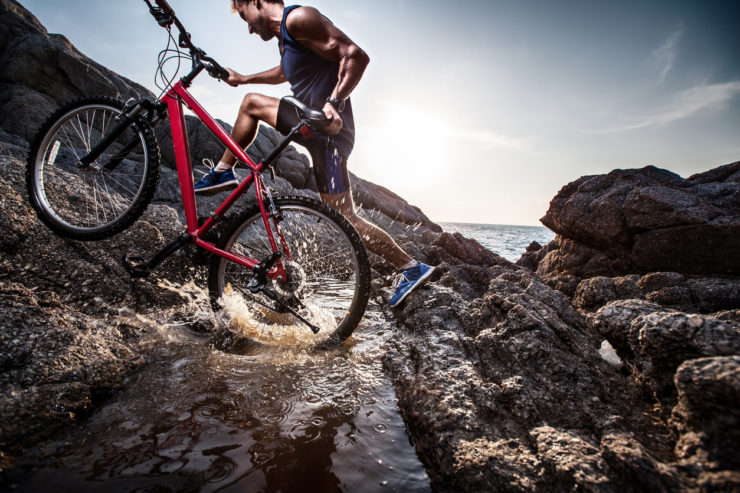ATC 259: Why Do I keep Getting Injured, How Long is a Long Run, Cramping Off the Bike, Training for a Mountain Race, How to Self-Coach, and more!
April 27, 2018Sponsor:
 This episode is brought to you by Generation UCAN Superstarch, the incredible fuel of choice for endurance athletes and health enthusiasts looking for burn more fat for fuel, optimize sports performance and keep blood sugar in check. EP fans get 15% of UCAN, shop now. You can also use the code “enduranceplanet” if you’re shopping at generationucan.com for that 15% discount. Join the revolution. You can burn more fat for fuel. Oh, and be sure to check out the UCAN bars with peach and also another flavor with coffee beans for an added kick!
This episode is brought to you by Generation UCAN Superstarch, the incredible fuel of choice for endurance athletes and health enthusiasts looking for burn more fat for fuel, optimize sports performance and keep blood sugar in check. EP fans get 15% of UCAN, shop now. You can also use the code “enduranceplanet” if you’re shopping at generationucan.com for that 15% discount. Join the revolution. You can burn more fat for fuel. Oh, and be sure to check out the UCAN bars with peach and also another flavor with coffee beans for an added kick!
On this episode of Ask The Coaches, with Lucho and guest coach/host Brock Armstrong:
Sol asks:
Background. I am 39, been running for 4 years mostly MAF-paced, but with a weekly tempo run of 8-10 miles. And for the main part, injury free. Until the last half year. After running a big PR trail 5k last summer, which included a very steep downhill section, I received ITBS (cause & effect?), which stayed with me for months. During that time, I couldn’t really run much and I kinda lost motivation. One fine day, inspiration returned, I signed up for a marathon, started training but my fitness was gone! With 19 weeks to go, I began upping the mileage again and slowly rebuilding. I reached 60 miles for the week (which I had been at prior to the ITB injury) and a 20-mile long run 4 weeks out when disaster struck in the form of a minor soleus injury… (I should mention, my training plan was approved by the physio). Those marathon aspirations were over.
I realized that 19 weeks for marathon training wasn’t ideal, but in order to jump-start training again, I needed to jump into it. Now, I want to do it again and do it properly. I have entered next year’s marathon, which is April 9, 2019. Right now, I’ve started running again, currently at 25 mpw over 3 runs and building up slowly.
How would you structure and periodize the coming year? How long for base, how long for long tempo work, how long for speedwork and what kind? How many long runs and what length; when and how often? How much volume and when? What kind of races would you include and when?
Oh, and here’s another question. Lucho has mentioned often that the long run is the key. Which of course it is. In context, it seemed that overall weekly mileage was not so important. However, my (prior) understanding was that long runs should not exceed a third of the weekly volume. Can you please clarify that. What is the function of high weekly mileage outside of the long run and how does the long run fit within it?
Or, now that I’m rebuilding again, the “10% rule?” I’ve often heard Lucho say, ‘listen to your body.’ Yet those injuries occurred out of the blue… What do you say? I’m listening…
The coaches say:
– Get the book Ready to Run
– We forget that we have lost the “born to run” ability after years of sitting in chairs and wearing crazy shoes.
– 10% is a rule of thumb that doesn’t necessarily apply – you have to be an experiment of one.
– Prehab prehab prehab.
– Long run mileage depends on how long each daily run is.
– Run a 10k in the fall.
– Get-Fit Guy episode about placebo
Aman asks:
In the last 5km of a 70.3 and in the last 10-15km of an Ironman, I feel I need to shorten my run stride due to cramps or the feel cramps are coming.
I am getting crazy cramps in the top part of my hamstring (I suspect it is my semitendinosus), When I cramp, it feels like I have a ball of muscle just pop out and it stops me dead mid-stride and I carry on like a pork chop for half a minute trying to stretch it out and massage it back to normal. While I can handle the pain, I can’t handle the feeling of needing to slow down from 5min km pace to 5:30 km pace just to keep cramps at bay.
I never get these cramps in training, I run 30-32km long runs every two weeks and the following week my weekly long run is somewhere around 20-22km Average training weeks are between 15-20 hours a week.
During these races, I am taking a gel every 30min or so and a salt tablet every 30min or so. If I miss a gel, it is because I am drinking coke or good old fashion RedBull (yet to give me wings)….
Any help would be great.
The Coaches say:
– This happens a lot.
– The fitness is not sufficient from riding to run.
– Get some massage and ART on the glute and ham.
– Check your feet and how they are contacting the ground. It all starts with the feet!
Bob asks:
Coaches, I have enjoyed Endurance Plant for several years and incorporated MAF training into my 2-man Race Across America (RAAM) in 2014. I credit the MAF method for a strong performance in that race.
I am a 55 yr old male, 5’9” and weigh 158lbs. I come from a road background and have participated in team RAAM six times. I recently purchased a mountain bike and ended up with a 2018 Leadville MTB 100 slot after finishing my first 100 mile Leadville qualifier and being selected in the post-race lottery.
I am looking for some advice regarding my prep for that race. My thought is to focus on MAF with my road bike for several months and in June start to incorporate multi-hour (6-8) tempo rides with intervals mixed in.
Most of that training will be on my road bike with one or two training rides each week on my MTB bike. With the exception of riding the MTB bike, that plan seemed to work for my 2014 RAAM. Do you think that the Leadville different enough from team RAAM that I need a different training plan?
I live in the Phoenix AZ area and my access to altitude and climbs is limited. I plan on arriving in Leadville about a week before the race to help with acclimatization.
My goal is to finish Leadville strong and earn the Leadville Buckle! Any advice would be appreciated.
The Coaches say:
– Be ready for the downhill
– Get on to the hill as soon as you can to get used to working at altitude.
– Training at intensity is important, MAF is not enough.
– The elevation is between 9,200 to 12,600 so you will need to be ready for that.
– Get-Fit Guy Heat Acclimation article.
MJB asks:
I’d love for Lucho and Tawnee to compare/contrast/discuss how self-coached athletes can and should choose which approach to follow of the generally available like Daniels, McMillan, Hudson, MAF, etc.
The Coaches say:
– Choose the one that is the most fun.
– Best possible scenario since you can change the plan depending on the day.
– You are an experiment of one.
– A good guide will be what worked for you in the past. Choose something similar or the next level from that.
Add your thoughts

Comments (3)
This is the second episode in a row without the download link that I had become accustomed to using to take onto the trails.
Hi, We're aware of the issue and working on it. Sorry for any inconvenience and thank you for your loyalty!
Issue is now fixed. Sorry for any inconvenience!